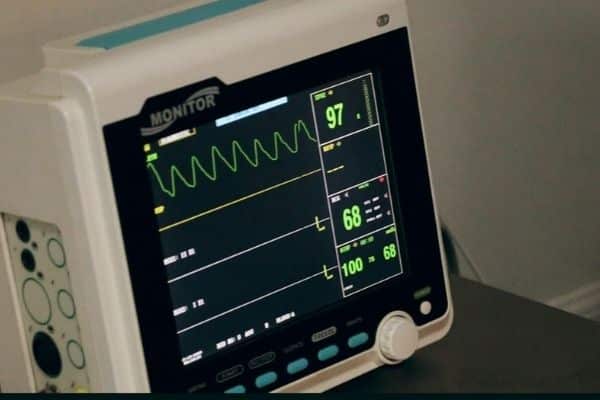
Understanding Readings on a Patient Monitor
Patient monitors have various readings depending on the purpose of that medical device. The monitor gathers data about your heart rate, blood pressure, respiration rate, blood oxygenation level, and pulse rate through sensors applied to the skin. Sometimes patches are applied to the skin, like when an EKG machine is used, or sensors are clipped onto a finger to obtain the readings. The sensors transmit the data wirelessly back to the main monitor. These methods are non-invasive and painless and can be repeated or done continuously. Patient monitors are vital for EMS first responders to begin to identify what’s going on, especially if the patient is unconscious or unable to speak.
Some monitors are clearly marked and easy to read and others are not. Suppliers including Coast Biomedical Equipment offer many different models. If you encounter one of the older more ambiguous monitors, here’s some information that will help you decipher the readings.
Heart Rate
All monitors record a patient’s heart rate. You might see a squiggly line with the letters “HR” above it, the abbreviation for heart rate. The number you see is the actual heart rate of the patient. Normal resting heart rates range from 60 to 100 beats per minute.
Blood Pressure
Patient monitoring is also necessary for tracking blood pressure. This reading refers to the pressure of the blood as it is pumped through the arteries by the heart. You may see another squiggly line with the letters “NIPB” above it with two numbers next to it separated by a slash. The first number, also called the top number, is the systolic pressure, which is measured after the heart has contracted and the pressure is at the highest level. The second or lower number, the diastolic pressure, is the measurement obtained when the heart rests and the pressure is at its lowest level.
Normal systolic pressures range from 100 to 130 while normal diastolic numbers range from 60 to 80. For example, a reading of 110/75 would reflect a healthy blood pressure.
Body Temperature
This is one of the easiest measurements to recognize because the range is limited. Normal body temperature was thought to be 98.6° F, but now can range anywhere from the high 97s to the low 99s with no concerns.
Respiration Rate
An average healthy person at rest breathes between 12 and 16 times every minute. This reading may be accompanied by a line with the letters “RR” above it. Even if this measurement isn’t clearly marked on the monitor, you will be able to recognize it by its range.
Oxygen Level
Also referred to as oxygen saturation, this number may be identified by the designation “Sp02” and is a measurement of how much oxygen is in the bloodstream. A scale of 100 is used. A number of 95 or higher is healthy. A number between 90 and 94 is not as good but still means that the body is getting sufficient oxygen. Any number below 90 indicates that the oxygen level is not high enough and treatment may be needed.
If one of the above measurements is not within the normal range, an alarm sound or flashing lights will indicate something is wrong, depending on the model. A patient monitoring device is an essential piece of EMS equipment, as it gives insights into what is happening inside the body.



